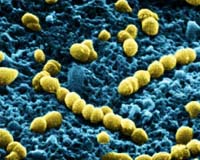| . |  |
. |
Guwahati, India (AFP) June 20, 2010 Indian customs officers Sunday seized the third shipment of tiger bones and other animal parts, worth 230,000 dollars and destined for use in traditional medicine in China. A customs official said the officers found tiger bones, skulls, and 125 kilogrammes of scales from pangolins, rare scaly mammals that are distant relatives of the anteater and a protected species in India. "The animal products were estimated at about 10.66 million rupees if sold on the international black market," customs superintendent S. Das told AFP. Customs officials, acting on a tip-off, had also seized two other shipments at the international airport in the eastern city of Guwahati on Wednesday and Thursday. In total, the raids netted contraband worth about 660,000 dollars. On average, poachers kill 30 tigers every year in Indian reserves, with demand driven by China where pelts, claws and bones are prized in traditional medicine. In 2008, Indian Prime Minister Manmohan Singh set up a national wildlife crime prevention bureau, drawing experts from the police, environmental agencies and customs in a bid to break up the poaching network. Tiger hunting is illegal worldwide and the trade in tiger parts is banned under a treaty binding 167 countries, including India. There are estimated 1,400 tigers living in the wild in India, according to conservation group WWF. In August of 2009, an Indian delegation in Beijing asked China for full co-operation for controlling cross-border trafficking of tiger parts and to send a clearer message to smugglers, but no official agreement was reached.
Share This Article With Planet Earth
Related Links Darwin Today At TerraDaily.com
 Battle Of The Bugs Leaves Humans As Collateral Damage
Battle Of The Bugs Leaves Humans As Collateral DamagePhiladelphia PA (SPX) Jun 18, 2010 It's a tragedy of war that innocent bystanders often get caught in the crossfire. But now scientists at the and the University of Oxford have shown how a battle for survival at a microscopic level could leave humans as the unlikely victims. In work funded by the US Public Health Service and the Wellcome Trust, the researchers have found a possible explanation for why some bacteria turn nas ... read more |
|
| The content herein, unless otherwise known to be public domain, are Copyright 1995-2010 - SpaceDaily. AFP and UPI Wire Stories are copyright Agence France-Presse and United Press International. ESA Portal Reports are copyright European Space Agency. All NASA sourced material is public domain. Additional copyrights may apply in whole or part to other bona fide parties. Advertising does not imply endorsement,agreement or approval of any opinions, statements or information provided by SpaceDaily on any Web page published or hosted by SpaceDaily. Privacy Statement |